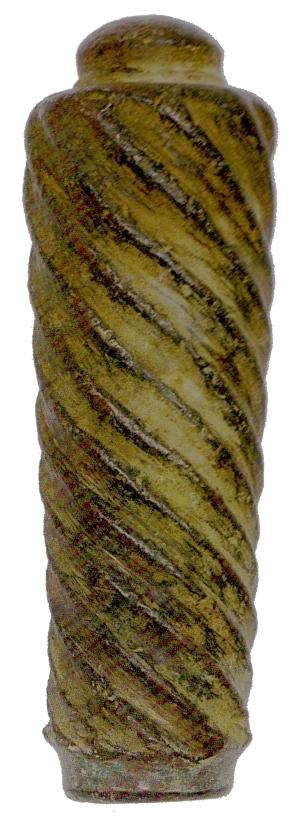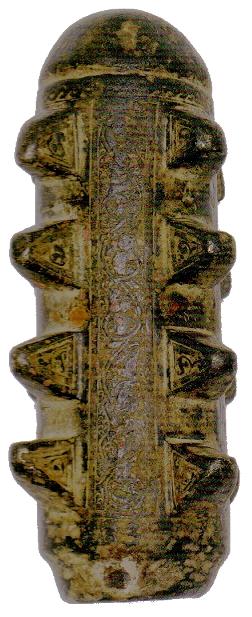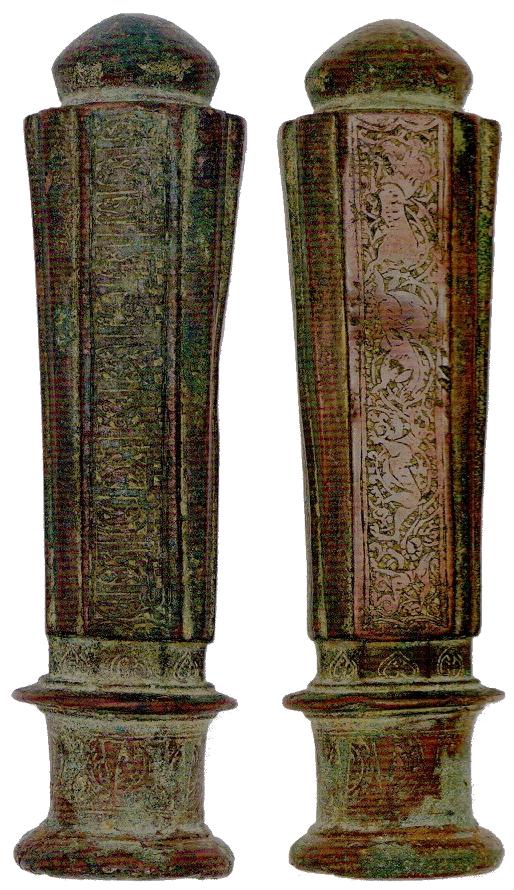
Join Amazon Prime - Watch Thousands of Movies & TV Shows Anytime - Start Free Trial Now
An extract from
The Arts of the Muslim Knight
The Furusiyya Art Foundation Collection
by Bashir Mohamed, 2008
Seljuk Maces
 |
 231 Mace head Iran, Saljūq period, twelfth century Copper alloy L. 17cm Inv. R-85 This fluted mace head of copper alloy is engraved with a guilloche pattern. A mace head with embryonic flanges, probably of the type described by Niẓām al-Mulk as used by the Turkish slave warriors at the Ṣāmānid court, was excavated at Nīshāpūr.1 According to Niẓām al-Mulk a mace (with a ring for attaching it to the saddle) was not presented until a young slave-warrior had trained for five years, at which time the warrior was well on his way to becoming a commander, a position accorded in his seventh year.2 In general mace heads of this shape can be dated to between the eleventh and thirteenth century. 1 Allan 1982. no. 142. 2 Quoted in Lewis 1974, Vol. 2, p. 237. |
 |
 232 Mace head Iran, Saljūq period, tenth-eleventh century Copper alloy L. 17cm Inv. R-87 Inscribed The cylindrical mace head has eight flanges, decorated alternately with Kufic script and bands of angular interlace flanking diamond-shaped motifs with a floral sprig; the socket is engraved with similar diamond-shaped panels. The globular finial retains traces of lacquered ornament. Squared-off interlaced panels like this are worked on cast copper alloy vessels made in eastern Iran.1 Other examples of mace heads of this type are also engraved with running animals (cat, no. 234) and the entire group can be attributed to the Saljūq period. Bibliography: Furusiyya 1996, II, no. 84ii; Chevaux et cavaliers arabes 2002. no. 65. 1Ward 1993. Fig. 41, an eleventh-century ewer from Nīshāpūr. |
 |
 233 Mace head Iran, Saljūq period, eleventh-twelfth century Copper alloy L. 16cm Inv. R-90 This mace head cast with ribs and a low domed cap is a variant type of the fluted heads described in cat. nos. 231-32 and also R-86 and R-88 in the Furusiyya Collection. A remarkable scene of battle depicted on a seventh-century Sogdian silver plate depicts a battle between two warriors with broken swords and maces, together with shields and spiked axe hammers strewn on the ground between them.1 Two of these have spiralling round heads and another is shaped like a large flower. This suggests that simpler forms of cylindrical mace heads, such as that cast with spiralling ribs in the collection, are continuations of older traditions. 1 Marschak 1986, pp. 284-85, no.198. |
 |
 235 Mace head Iran, Saljūq period, twelfth century or earlier Copper alloy L. 11cm Inv. R-92 The use of studs on this mace head is unusual but the tubular form, round head and the incised decoration suggest a similar dating to the fluted examples such as cat. nos. 231 and 234. |
 |
 234 Mace head Iran, Saljūq period, twelfth century Copper ahoy L. 19.5 cm Inv. R-91 Inscribed: al-birr Piety, righteousness This mace head is engraved with friezes of running animals against a scrolled ground, alternating with a repeating word, al-birr, inscribed in Arabic in a Kufic script against a similar background. It has a rounded finial at the top and a collared socket. The decoration is typical of eastern Iranian work in the Saljūq period. |
See also Animal headed Seljuk Maces (‛Amūd)
Maces by David Nicolle, an extract from The military technology of classical Islam
Other Seljuk Illustrations of Costume & Soldiers
